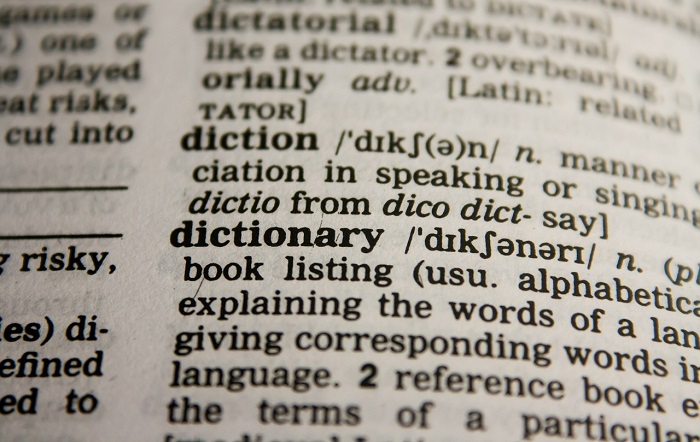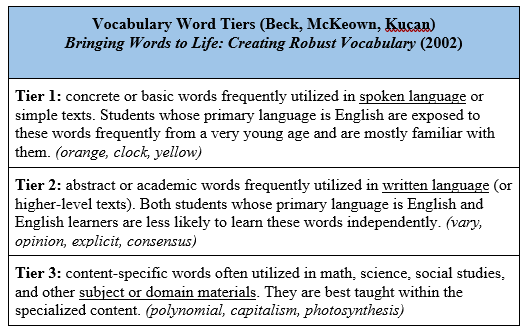- MN ABE Connect
- Archive
- The “Just in Time” Evidence-Based Reading Instruction (EBRI) Newsletter Series: Part 3
 January 24, 2022
January 24, 2022
The “Just in Time” Evidence-Based Reading Instruction (EBRI) Newsletter Series: Part 3
Kristine Kelly, Literacy CoordinatorThis article is Part 3 in a newsletter series highlighting PD and resources for each of the four components of Evidence-Based Reading Instruction (EBRI): alphabetics, fluency, vocabulary and comprehension. Part 1 of the series dealt with alphabetics and Part 2 of the series dealt with fluency.
This week we’ll dig into some useful free vocabulary resources for determining which words to teach, depending on the level of your learners and their goals. Remember, useful reading resources are always available in the ATLAS Reading resource library.
Free Vocabulary Resources from ATLAS
Vocabulary can be so enjoyable to teach and to learn! Over the many years and the many levels of adult learners I’ve taught, I can recall few learners who had little interest in improving their knowledge of vocabulary.
Vocabulary knowledge has a definite impact on reading comprehension and vice versa. According to Mary E. Curtis (2006), a subject-matter expert for the national adult reading initiative STAR, it is likely that for adults who have struggled with reading,
“Their lack of vocabulary knowledge is causing them comprehension problems, and their comprehension problems are preventing them from overcoming their vocabulary deficits” (p. 63).
For all of us, vocabulary is a key tool for communication and for learning. It is the foundation of reading, writing, speaking and listening. As such, vocabulary instruction can be overwhelming in the number of words possible to teach, so resources that help us to identify high-frequency words are valuable. We have only a small space here, but for more information and examples on evidence-based strategies and routines for teaching vocabulary, I encourage you to register for Marn Frank’s upcoming EBRI webinar series.
Word Tiers
For purposes of teaching vocabulary, experts have organized words into three categories, according to complexity, meaning, and frequency (note that there is flexibility in word tiers as some words may appear in more than one tier, depending on the context it is used, e.g., mean, table, counter).

Formal Tier 2 vocabulary instruction generally begins at the following levels:
- Low-Intermediate ABE (217+ CASAS GOALS and 501+ TABE 11/12)
- High-intermediate ESL (211+ CASAS Life & Work)
However, at lower levels, we can help to build the foundation for Tier 2 vocabulary by exposing students in conversation, read-alouds, videos, and other oral language activities.
High Frequency Word Lists
For teaching Tier 1 and Tier 2 vocabulary, several resources can help us to determine which words to focus on in instruction:
- The New Dolch List – originally compiled by Edward William Dolch in 1936, this list of high frequency English words (sometimes referred to as “sight words”) was updated in 2020 from 315 to 875 words, taking English learners into account.
- Fry Instant Words – Edward B. Fry expanded on Dolch’s list in 1979 to include a list of the most common words by frequency used for teaching reading, writing, and spelling, with the first 300 words needing to be recognized immediately by readers.
- Fry’s Instant Words, Phrases & Sentences – This resource includes Fry’s first 300 words plus phrases and short sentences containing the first 100 words from Fry’s Instant Word Lists.
- New General Service List – Updated in 2013, this list contains approximately 2800 words that are “designed to help learners attain the highest possible coverage of general English with the fewest possible words.”
- Academic Word List – Developed by Averil Coxhead in 1998, this list includes 570 English words that appear in a large range of academic texts with great which appear with great frequency in a broad range of academic texts. This original list was intended to target ELs and teachers of ELs in order to help with preparation for higher education. The original Academic Word List is the list we have incorporated into professional development in MN since the onset of STAR (and eventually EBRI trainings) in 2008.
- New Academic Word List – This list updates the collection of academic vocabulary to include 963 high-frequency words that appear in academic text and oral discourse. The new list shares approximately 21% of the word families with the previous Academic Word List.
Finally, mark your calendars for the upcoming EBRI Webinar Series with Marn Frank this winter and spring! The series will take place on Fridays from 1:00-2:30pm CST on February 18, March 4, March 25, April 15, April 29, and May 20, 2022.
Get more information on the ATLAS Events calendar; registration for each webinar will open soon. You can attend some or all of the webinars!
Reference
Curtis, M. E. (2006). The role of vocabulary instruction in adult basic education. In J. Comings, B. Garner, & C. Smith (Eds.), Review of adult learning and literacy (Vol. 6, pp. 43–69). Mahwah, NJ: Erlbaum.
Stay tuned for Part 4!
Next time, we’ll take a look at some strategies and resources for teaching vocabulary. For any questions regarding this newsletter series or EBRI in general, email [email protected].
Newsletter Signup
Get MN ABE Connect—the official source for ABE events, activities, and resources!
Sign UpArticle Categories
- ABE Foundations/Staff Onboarding
- ACES/Transitions
- Adult Career Pathways
- Assessment
- CCR Standards
- Citizenship
- COVID-19
- Cultural Competency
- Digital Literacy/Northstar
- Disabilities
- Distance Learning/Education
- ELA
- Equity/Inclusion
- ESL
- HSE/Adult Diploma
- Listening
- Math/Numeracy
- Mental Health
- Minnesota ABE
- One-Room Schoolhouse/Multilevel
- Professional Development
- Program Management
- Reading
- Remote Instruction
- Science
- Social Studies
- Speaking/Conversation
- Support Services
- Teaching Strategies
- Technology
- Uncategorized
- Volunteers/Tutors
- Writing